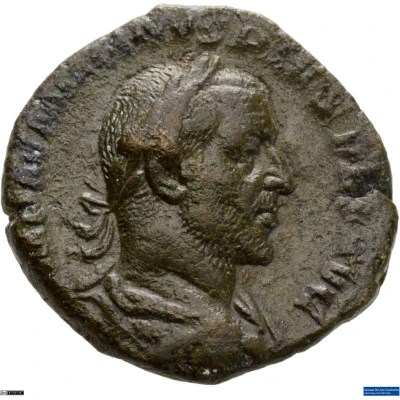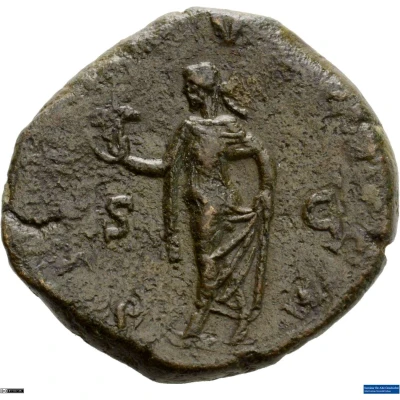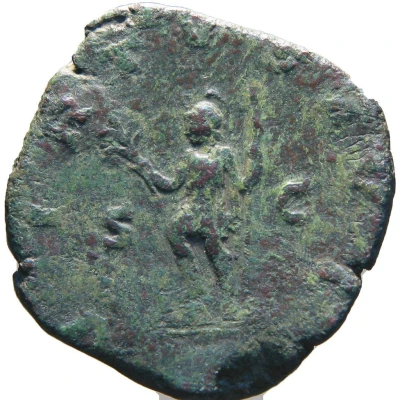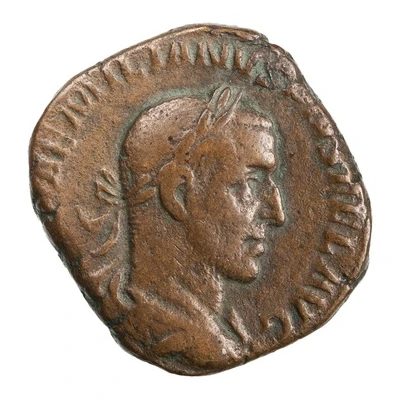
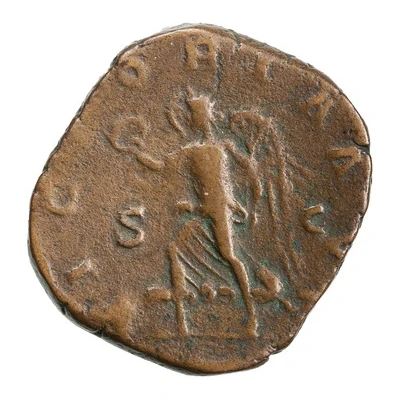

© American Numismatic Society (ANS)
Sestertius - Aemilianus VICTORIA AVG S C; Victory
253 year| Bronze | 16.7 g | 29 mm |
| Issuer | Rome › Roman Empire (27 BC - 395 AD) |
|---|---|
| Emperor | Aemilianus (Marcus Aemilus Aemilianus) (253) |
| Type | Standard circulation coin |
| Year | 253 |
| Value | Sestertius (⅛) |
| Currency | Antoninianus, Reform of Caracalla (AD 215 – 301) |
| Composition | Bronze |
| Weight | 16.7 g |
| Diameter | 29 mm |
| Shape | Round (irregular) |
| Technique | Hammered |
| Demonetized | Yes |
| Updated | 2024-10-05 |
| Numista | N#284716 |
|---|---|
| Rarity index | 100% |
Reverse
Victory, winged, draped, advancing left, holding wreath in right hand and palm in left hand.
Script: Latin
Lettering: VICTORIA AVG S C
Translation:
Victoria Augusti. Senatus Consultum.
Victory of the emperor (Augustus). Decree of the senate.
Comment
Example of this type:American Numismatic Society (ANS)
Source:
Online Coins of the Roman Empire (OCRE)
Interesting fact
One interesting fact about the Sestertius - Aemilianus (VICTORIA AVG S C; Victory) coin is that it features a depiction of the Roman goddess Victory (Victoria) on the reverse side, which was a common motif on Roman coins during this time period. The image of Victory was meant to symbolize the power and dominance of the Roman Empire, and it was often depicted holding a wreath or a palm branch, as seen on this coin. The use of Victory as a symbol of Roman supremacy was a powerful propaganda tool, and it helped to reinforce the idea that the Roman Empire was the greatest and most powerful empire in the world.
